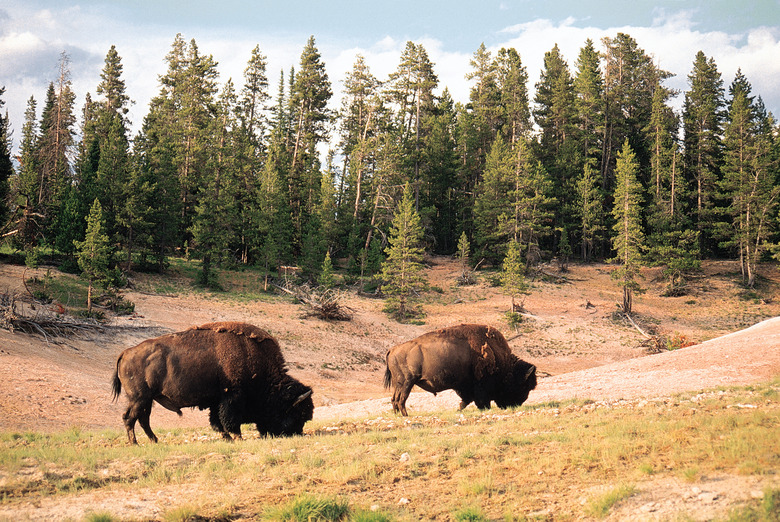What Do Botany & Zoology Have In Common?
In the spectrum of life, plants and animals seem to be entirely different entities. Likewise, botany, the study of plants, and zoology, the study of animals, seem to be different disciplines. While the organisms they study and many of their methods are different, these two sciences share many parallels with each other and with other biological sciences.
Botany and Zoology are Both Biological Sciences
Botany and Zoology are Both Biological Sciences
Biology encompasses all scientific pursuits that concern living things. Biological disciplines can be divided by the types of organisms they study, as in botany, zoology or microbiology, or they can be divided by the aspect of life that they study, such as physiology, genetics or ecology. While all of these disciplines vary in their focus and their methods, they all concern life. As disciplines within biology, zoology and botany share a basis in the scientific method. Both also answer questions about complex biological organisms rather than single-celled organisms such as protists, bacteria or viruses.
Botany and Zoology Share a Taxonomic System
Taxonomy in biology is an organizational system that places all known life forms into groups and subgroups. Prior to the imposition of a universal taxonomic system, organisms were classified by similarities in physiology or habits. For example, worms could refer to earthworms, snakes or intestinal parasites. Carolus Linnaeus, 18th-century Swiss botanist and zoologist, instituted a binomial system of nomenclature and proposed the hierarchy of class, order, genus and species. The modern taxonomic classification shared by botany, zoology and other life sciences consists of seven increasingly inclusive levels that represent evolutionary relationships. The taxonomic hierarchy is species, genus, order, class, phylum, kingdom and domain.
Zoology and Botany Have Field and Laboratory Components
Zoology and Botany Have Field and Laboratory Components
The approaches to studying plants and animals can be divided into field and laboratory components. Laboratories allow you to better control the variables of an experiment, leading to less uncertainty in the results of the experiment. On the other hand, controlled environments can have unanticipated effects on plants and animals by removing them from the complex web of the natural world. Field research helps answer questions about complex natural systems.
Ecology Touches on Botany and Zoology
Ecology Touches on Botany and Zoology
Ecology is the study of the interactions between organisms and their environments. The interactions between plants and animals have shaped the form and function of both kingdoms, and the study of either cannot be undertaken without an understanding of the role of ecology. Ecological interactions where botany and zoology meet include herbivory, parasitism, pollination and seed dispersal. Ecology also illuminates the relationships between plants, animals and the abiotic environment, for example, the weather, geology and other nonliving components of the environment.
Cite This Article
MLA
Becker, Andrea. "What Do Botany & Zoology Have In Common?" sciencing.com, https://www.sciencing.com/botany-zoology-common-20569/. 24 April 2017.
APA
Becker, Andrea. (2017, April 24). What Do Botany & Zoology Have In Common?. sciencing.com. Retrieved from https://www.sciencing.com/botany-zoology-common-20569/
Chicago
Becker, Andrea. What Do Botany & Zoology Have In Common? last modified August 30, 2022. https://www.sciencing.com/botany-zoology-common-20569/
